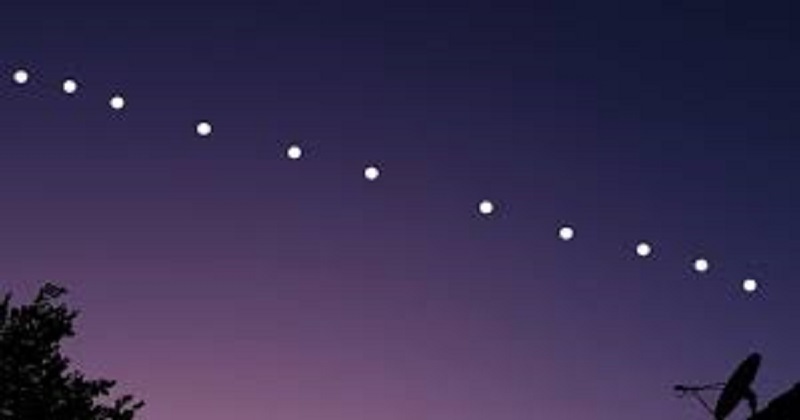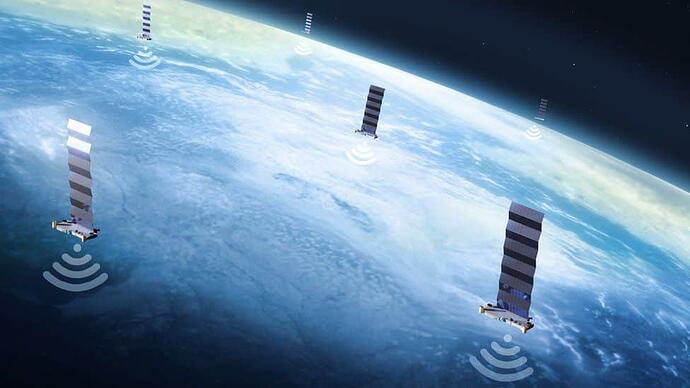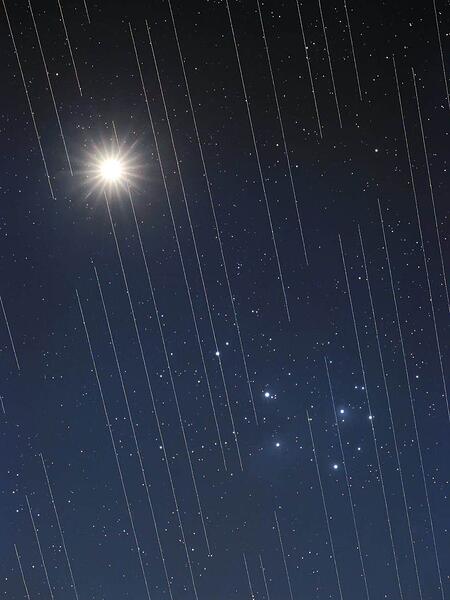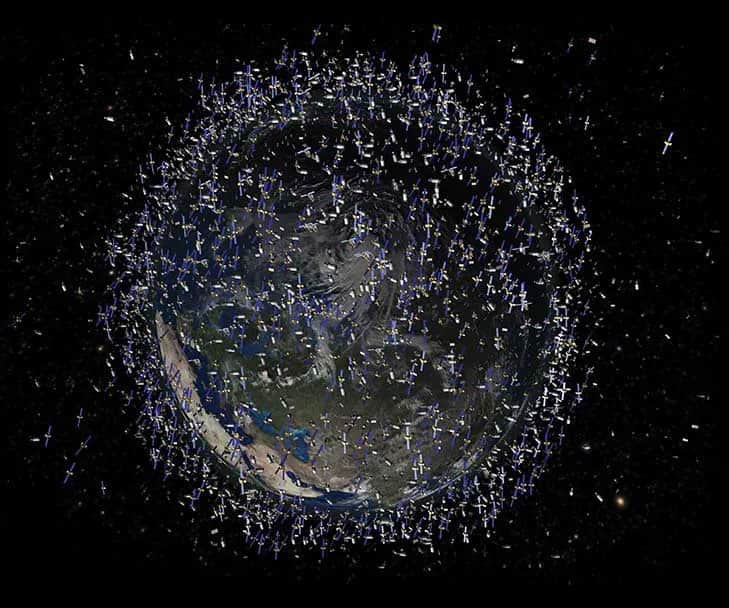Continuing the discussion from Energy sources of the future:
Starlink satellite train in the night sky.
Huge networks of spacecraft are being launched that are making it harder to get a clear view of the cosmos. These low-orbiting, fast-moving satellites leave bright streaks across telescope images. The International Astronomical Union is establishing a new centre to focus the community’s response. Its work will be led by the US National Optical-Infrared Astronomy Research Laboratory (NOIRLab) in Tucson, Arizona; and by the Square Kilometre Array Organisation (SKAO) in Manchester, UK. The latter is most concerned with the satellites’ effects on radio astronomy.
The new Centre for the Protection of the Dark and Quiet Sky from Satellite Constellation Interference will try to act as a single voice for astronomy. It will engage with, and encourage, satellite companies to make every effort to minimise the light pollution they are creating. But it will also pursue policymakers around the world to tighten the regulations on what is acceptable behaviour in orbit.
The dramatic reduction in the cost of rocket launches, linked to a similar reduction in the cost of building satellites, has led to a rush to place new infrastructure in the sky. Of immediate concern are the constellations designed to deliver broadband internet connections from space. These involve placing many hundreds to many thousands of satellites just a few hundred kilometres above the Earth. At this altitude, they move quickly across the sky, and at dawn and dusk when the Sun is low on the horizon will catch the light and trace a bright line through a telescope’s exposure.
Starlink satellites cross over Venus and the Pleiades (“Seven Sisters”) group of stars
The satellites’ transmissions can also, if not tightly constrained, bleed across the frequencies used by astronomy’s radio antennas.
Two broadband projects - US entrepreneur Elon Musk’s Starlink network and the UK-headquartered OneWeb initiative - are leading the new wave of constellations, and have between them launched over 2,000 satellites, but both have plans for many, many more.
Connie Walker from NOIRLab and the other co-director of the new centre said: “As the number of satellites continues to grow, astronomy is facing a watershed moment of increasing interference with observations and loss of science. By the end of a decade, more than 5,000 satellites will be above the horizon at any given time at a typical dark-sky observatory location. A few 100 to several 1,000 of these satellites will be illuminated by the Sun. These satellites will be detectable by even the smallest optical or infrared telescopes, depending on the hour of the night and the season.”
2020 - For illustrative purposes only - not to scale.
It’s hard to believe that there’s no control on satellite launches and placement … ![]()
After the Soviet Union launched Sputnik, the world’s first human-made satellite, in 1957, a slow but steady stream of satellites entered Low Earth Orbit (LEO), with between 10 and 60 launched annually until the 2010s, Supriya Chakrabarti, a professor of physics at the University of Massachusetts Lowell, wrote in an article published on Space.com, a Live Science sister site. Since then, that rate has skyrocketed, with more than 1,300 new satellites launched into LEO in 2020 and more than 1,400 satellites launched in 2021, Chakrabarti wrote. In total, there were around 7,500 satellites in LEO as of September 2021, according to the United Nations’ Outer Space Objects Index.
The number of satellites in LEO, a region that spans up to 1,424 miles (2,000 kilometers) from Earth, will continue to increase at an exponential rate in the coming decades. That’s because private companies are setting up their own megaconstellations, each containing thousands of individual satellites, which will be used to develop faster online networks and deliver a range of other services, such as monitoring climate change.
This increased activity is happening now largely because of dropping costs, said Aaron Boley, an astronomer at The University of British Columbia. “We know SpaceX, OneWeb, Amazon and StarNet/GW [China’s satellite network] have proposed a combined satellite total of 65,000 when including all phases” of their satellite programs, Boley told Live Science. And “well over 100,000 satellites have been proposed” in total, he added.










